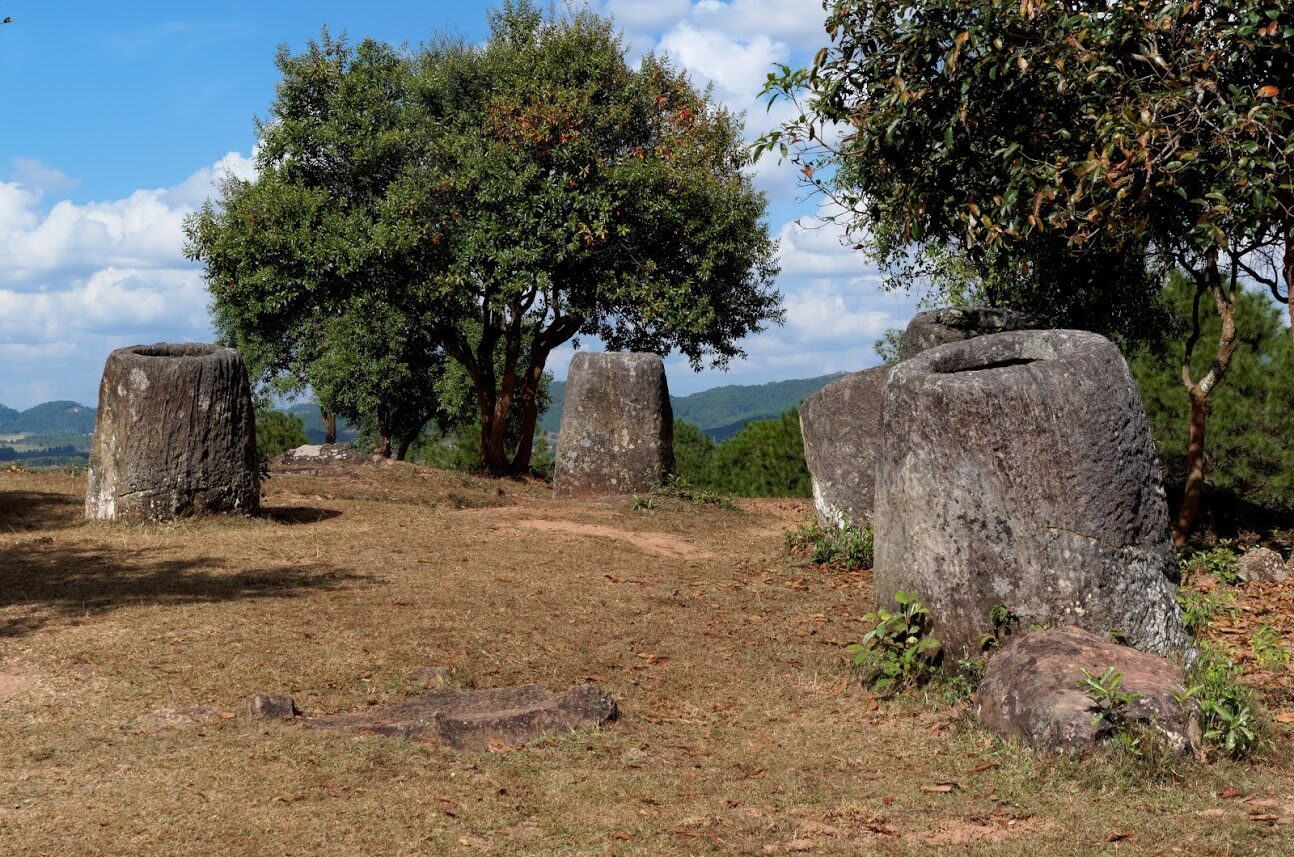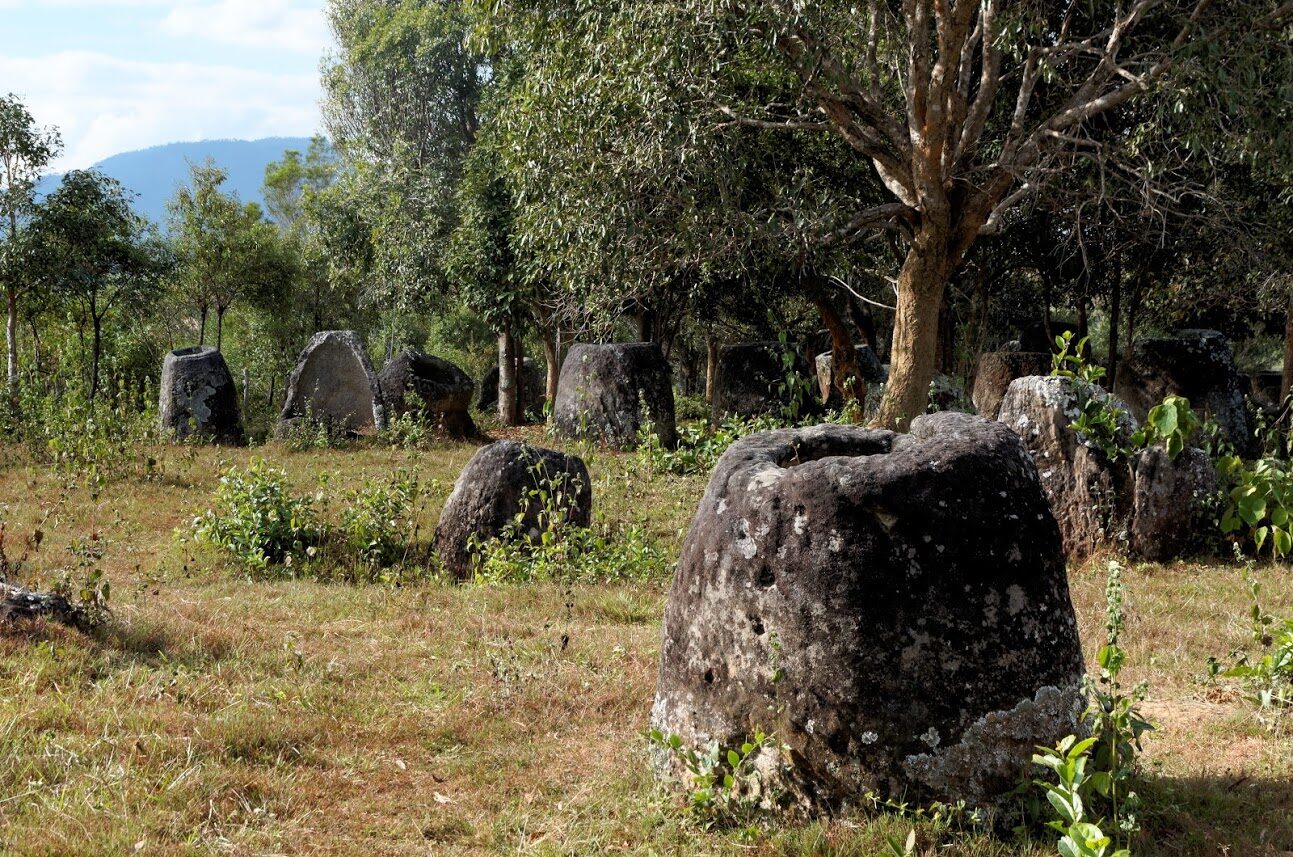
© Jakub Hałun – CC BY-SA 4.0
The Plain of Jars is a megalithic archaeological landscape attributed to the late Iron Age of Southeast Asia from 500 BC to AD 500, consisting of thousands of large stone jars placed on hills within the central plain of the Xiangkhoang Plateau in Laos.
According to
local Lao legend, the jars were created by a race of giants after winning a great victory in battle. The giants used the jars to brew and store
lau hai, loosely translated to mean 'rice wine' or 'rice beer'.
Up to 120 jar sites have been identified, each containing stone jars hewn from either sandstone, granite, conglomerate, limestone, or breccia at nearby quarries or from boulders extracted from riverbeds.
The cylindrical shaped jars have a lip rim to support a lid, and range from one to more than three metres in height, weighing up to 14 tons. Very few examples of stone lids have been recorded, suggesting that the jars were most likely capped with perishable material.

© Jakub Hałun – CC BY-SA 4.0
The
function of the jars is still debated, with some archaeologists suggesting that they were prehistoric mortuary vessels, evident by the discovery of human remains, burial goods and ceramics around the jars.
Another theory proposes that the jars were used as distilling vessels, where a body would be placed inside and left to decompose, which would then be removed to allow cremation or reburial of the skeletal remains.

© Jakub Hałun – CC BY-SA 4.0
In contemporary funerary practices followed by Thai, Cambodian, and Laotian royalty, the corpse of the deceased is placed into an urn during the early stages of the funeral rites, at which time the soul of deceased is believed to be undergoing gradual transformation from the earthly to the spiritual world. The ritual decomposition is later followed by cremation and secondary burial.
On 6 July 2019, the Plain of Jars was inscribed as a UNESCO World Heritage Site.
R.C.